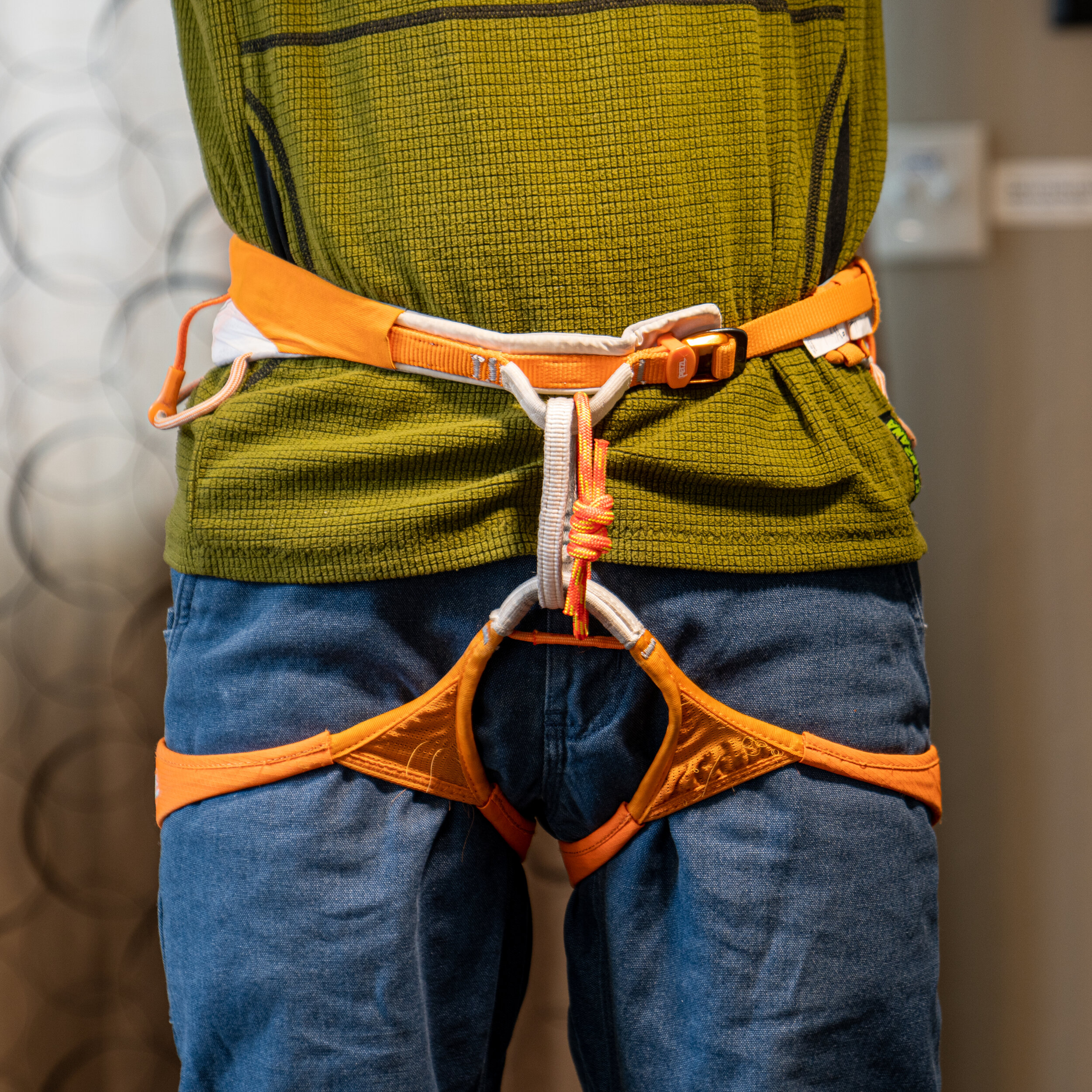A post on the internet of a person asking about the integrity of their belay loop created some interesting discussion. Below I have answered some of the comments and hopefully brought some thought to the problems associated with the solutions.
The original posters photo
Original question:
“The stitch end of my belay loop starts to become a little loose right now. It‘s two and a half years old with irregular climbs, mostly in gyms. The gym I recently visited only allowed us to use a carabiner rather than a figure-of-eight when top roping. I noticed that the carabiner sometimes exerted a torque on the stitch following an awkward fall, which might be the cause. Just wonder is this a safety concern (especially when lead belaying)? How could I slow the deterioration? Many thanks.” -Facebook poster
So Ill start with this comment:
The first comment to “replace it” is right on! But the follow up comment of putting tape on it is just a no no. The first comment is correct about if you don’t feel safe, but tape here is like laying newspaper over spilled milk. It is still there and eventually is going to spoil. The tape will only cover up the problem, and if the problem would happen to get worse you wouldn’t notice.
There is also the idea that the chemicals in the adhesive of the tape could cause the belay loop to deteriorate. This is really unlikely but there is a very very small truth to this. So avoiding this by not putting tape on it is a better solution.
The next comment is something I have seen many times and provides little to no strength redundancy but can cause some pretty big issues:
Temporary or back up belay loops are just not a solution. They are not strong at all compared to the belay loop itself. Belay loops must meet the UIAA minimum standard of 15kn. Most belay loops test well above this, in fact most test above 20kn. 7mm accessory cord is around 11kn and 5mm is around 6kn to give examples of the size cord you might use to create a back up.
So if you use cord, you will need to tie a knot. Typically a double fishermans. This is quite bulky. I try to leave my belay loop and tie in points clean in general as it is my work space. So now you have cluttered this place introducing possible mis-clips and or confusion which could and has lead to near misses and accidents.
link below
Which was followed by this link: rope cutting
This does happen but a few things to note here. The rope is tensioned. The rope that is moving is small.
The rope doesn’t actually cut here. It melts. This is more of a rope trick and used to scare people. Rarely would we find these similar dynamics in the wild and this is definitely not how rope interfaces with a harness.
Clipping in with a carabiner to the belay loop is fine. I would suggest against clipping to the two tie in points as you can start to load the gate of the carabiner. I would suggest using a tri-action locker which you can read more about here. You can see a tri-action locker in the video below. Note the 3 actions to get the gate open.
You can actually tie into belay loops. Climbers don’t for 2 reasons. One, you will probably want it for belaying. Two, it can wear the loop out faster. The later point here is a bit mute because the loop still rotates and you are wearing at a different spot every time. So really if you climb enough to wear a harness out this way good for you. But I bet that will still take you 8-10 years and you should have probably already bought a new harness anyway.
I would suggest against having a “workshop” resew a belay loop for your harness. If you are going to use a carabiner I would use the Petzl Omni Triact lock. It has a cross-load rating of 15KN but a price tag that is about as much as some new harnesses. So again, maybe just buy a new harness.
My recommendation is really to just buy a new harness if you ever have any doubt. I do think the harness in the photo is fine as it really has no structural damage. But all I can tell is what I see in the picture.








